Bremen for chocoholics
Tourism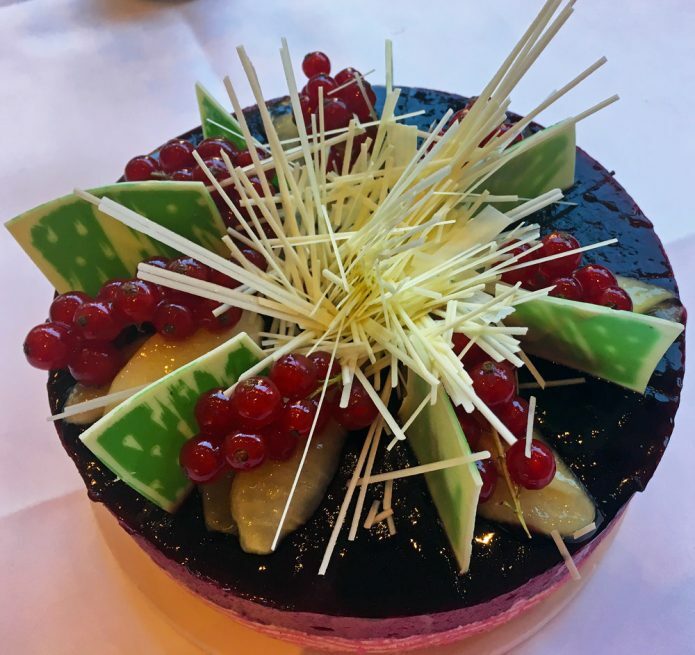
When it comes to sweet temptations made of cocoa, you can count me in. No matter whether it’s milk or dark chocolate, nougat or marzipan, I love them all. A photo from my childhood shows me – looking slightly mischievous – with a large bar of chocolate in my hands which I’ve just bitten into and am clearly enjoying.
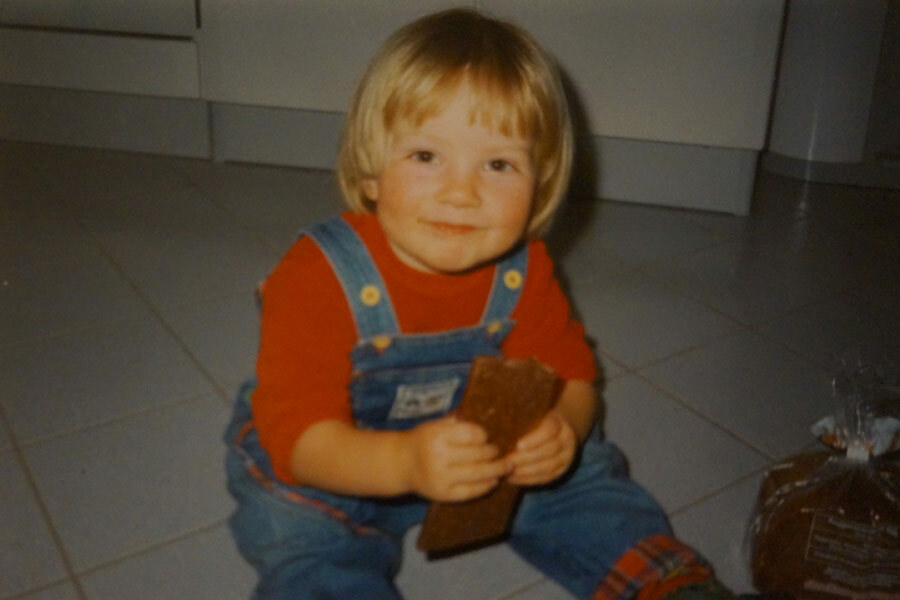
My passion for all things chocolate remains the same, though these days I am a little more restrained in my enjoyment of it. So I particularly enjoyed exploring Bremen’s sweeter side:
Made for each other: wine meets chocolate in Bremen’s Ratskeller
Bremen’s Ratskeller really is something special: not only has it been storing and selling fine wines since 1405, but it’s also home to the world’s largest collection of German wines and the oldest cask wine in Germany. I got a taste of what else is on offer during a ‘wine and chocolate’ tour of the ‘vintage’ town hall cellar, starting beneath the vaulted ceilings of the restaurant, surrounded by intricately decorated casks and pillars. I can immediately see (and smell) that the restaurant offers delicious food in elegant surroundings. But what I didn’t know is that its 800 seats also make it Germany’s largest wine tavern, as Claudia Staffeldt, responsible for sales and marketing at the Ratskeller, tells me. It comes as no surprise, then, that both Rathaus and Ratskeller have been UNESCO World Heritage sites since 2004. After a brief introduction to its history, I’m ready for my first drop of wine and the first piece of chocolate. So we’re off through the kitchen and the storage area, and down a ramp. Yes, you’ve read that right. It may not be as elegant as in the restaurant, but it makes up for that with authenticity. It’s exactly the ‘non-perfection’ behind the scenes that gives this tour its honest and raw character. As Staffeldt explains: “These rooms are far from grand, of course, but when the Ratskeller was built 600 years ago it was not to host guided tours and house a museum. Because of its UNESCO listing we are unable to make any major structural changes.”
At last! I’ve been looking forward to this the whole day. “Let the chocolate start to melt and then take a sip of sekt,” are the instructions. I start my first tasting armed with a small Hachez blueberry cheesecake pot in one hand, and a glass of Oberrotweiler pinot noir sekt, a sparkling wine, in the other – and I’m wowed! A flavour explosion of blueberry cheesecake and the delicate fruitiness of the sekt. Good job that the piece of chocolate is so generous – enough for another bite. All accompanied by a promotional video about the Ratskeller.
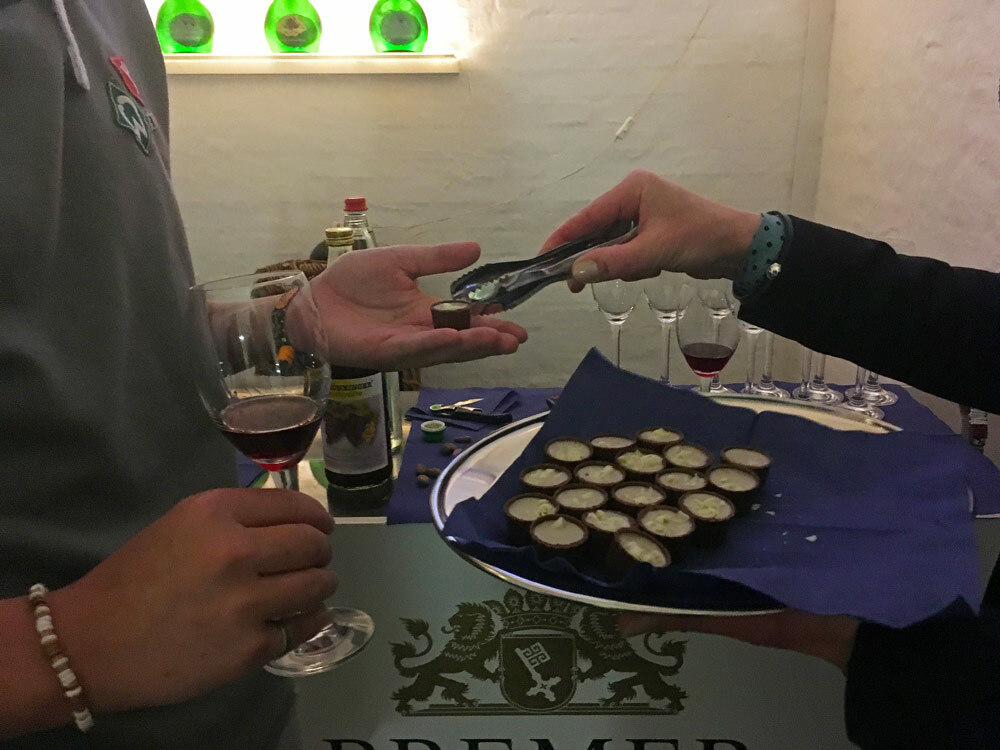
Then it’s on to the farthest corners of the cellar. We stop in front of a 400-year-old door made of finest German oak. This former entrance door to the Ratskeller was removed in the 1960s and has found a new home here. It opens up as if by magic with the help of some wine spirits ;) – and gives access to the Schatzkammer, or treasure room, where the most valuable bottled wines are stored. It’s cold and dark, and I get that typical, not unpleasant smell of a cellar. Bathed in red and blue light, the cellar here has a special atmosphere and a certain air of romance. Candles on the floor light the way past huge casks towards our goal, the colourfully lit Schatzkammer.
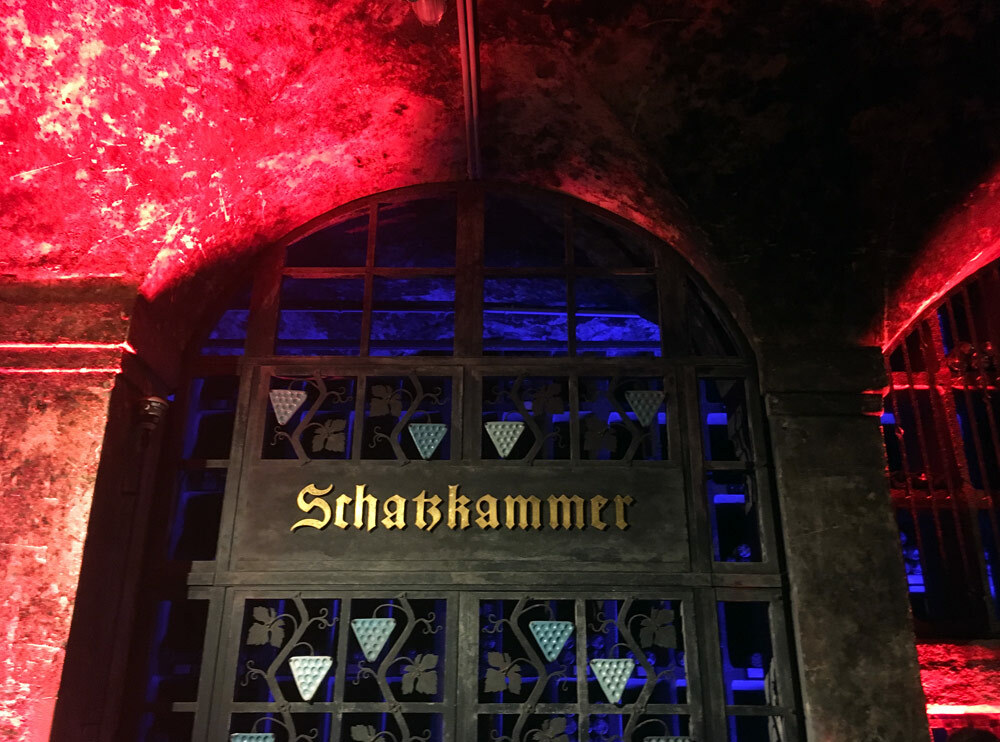
Besides housing numerous bottles of fine wine, the oldest dating from 1727 (and available to buy at €1,500 a bottle), I’m delighted to see that this is also the site of our next tasting. This time I have a piece of Hachez luxury milk chocolate with almonds in my left hand, and a glass of pinot blanc in my right. The resulting combination of melting creaminess and nutty almonds is a dream come true, and has finally convinced me of the merits of this ‘wine meets chocolate’ experiment. So what are the criteria used to come up with such unbeatable combinations? “It’s all trial and error,” Staffeldt says. Where others might be scratching their heads, she simply goes ahead and tries it – and has managed to convince quite a few sceptical guests along the way. Her top tip: chocolate-coated gummy bears with a fruity albariño. That’s got to be worth a try!
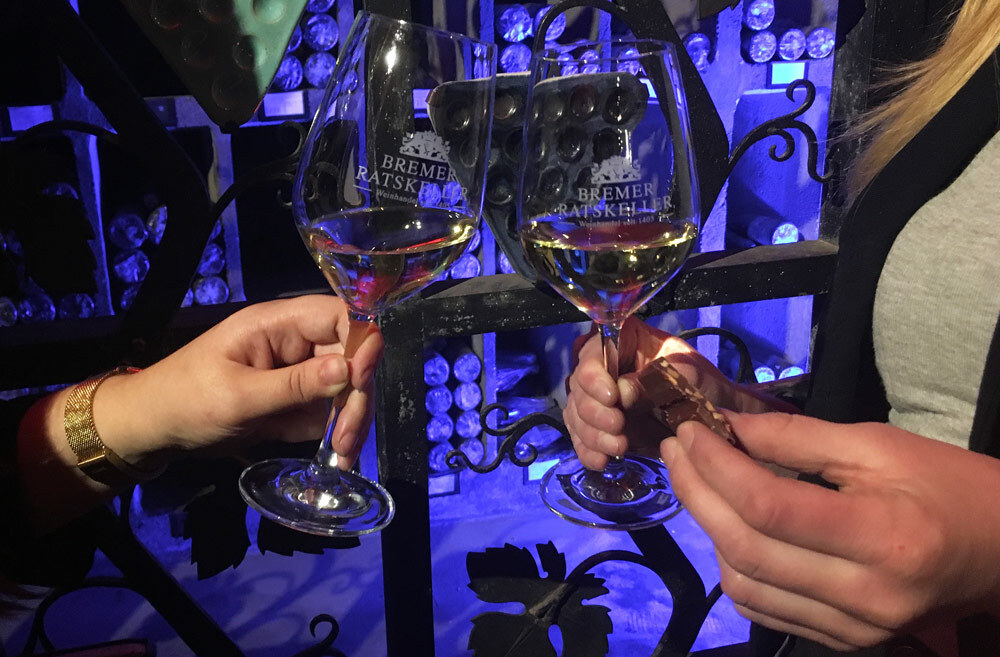
After a look into the bottle store, housing around 1,200 types of wine, I can hardly wait to get to the third tasting. This time I’m handed a spoonful of Grashoff dark chocolate mousse with ground espresso beans and a glass of a red wine called Domina. This is the highlight of the evening for me. The flavours of roasted coffee beans in the creamy chocolate harmonise perfectly with the hint of cherries in the wine.
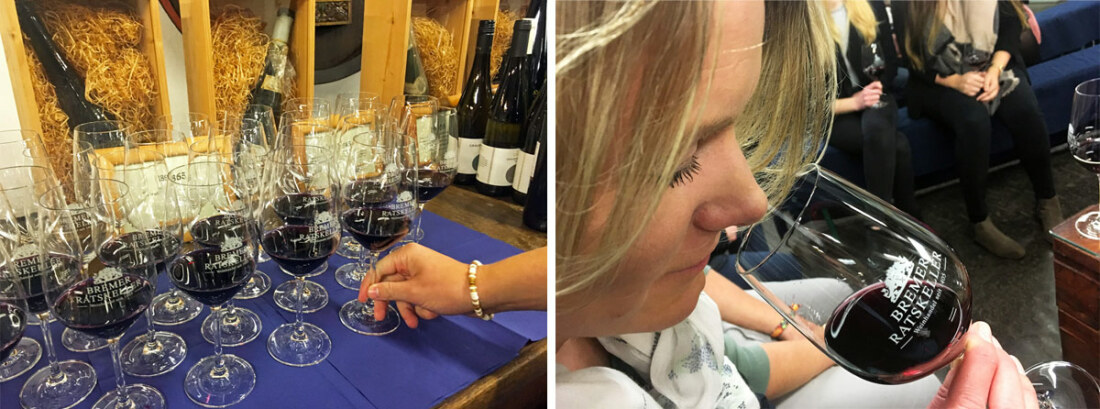
To conclude the tasting we visit the apostles’ cellar, where the heady aroma of old wine and the subtle candlelight make for a magical ambience. This is where Germany’s oldest cask wine is stored, a rosé wine from Rüdesheim dating back to 1653. I leave the Ratskeller with the beguiling smell lingering in my nose and a riesling truffle as my bedtime treat. It’s worth mentioning that the order of tastings changes every three months, and that the guided tour for €35 per person lasts three hours (not one hour, as in my case). The tasting includes five exclusive wines and five chocolates. Cheers and guten appetit! Now, onwards for another slice of chocolate heaven:
Chocolate galore at Café Hauptmeier
A look in the shop window of this patisserie gives me an idea of the glorious things that await within. As soon as I’m inside, I don’t want to leave. Behind the counter there’s a dazzling array of colourful pralines and delicate truffles alongside gateaux and cakes of all sizes. Truly a work of art. The shelves are stocked with home-made jams.
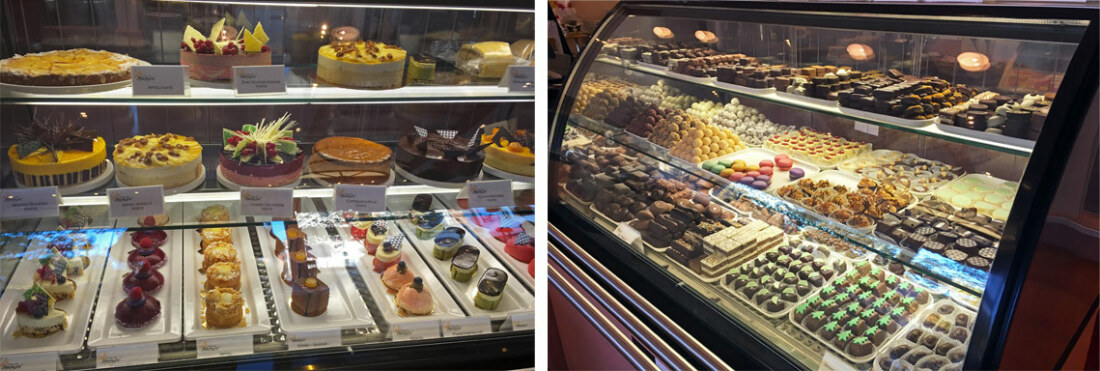
But that’s not all … Whether it’s a replica of the Weser Stadium, a cake in the shape of a lorry or a life-size chocolate statue, there’s not much that Peter Hauptmeier can’t create. The 69-year-old has been the pastry chef at Café Hauptmeier in the Best Western Hotel zur Post since 1995. Together with his six staff he fulfils even the most unusual requests for weddings, birthdays and corporate events. And everything is made from scratch! Hauptmeier and his team get through two tonnes of chocolate every year for these special commissions. Transporting it isn’t always easy, especially during the summer months, so keeping things cool is a must. After all, some of these hand-made masterpieces take up to five hours to make.
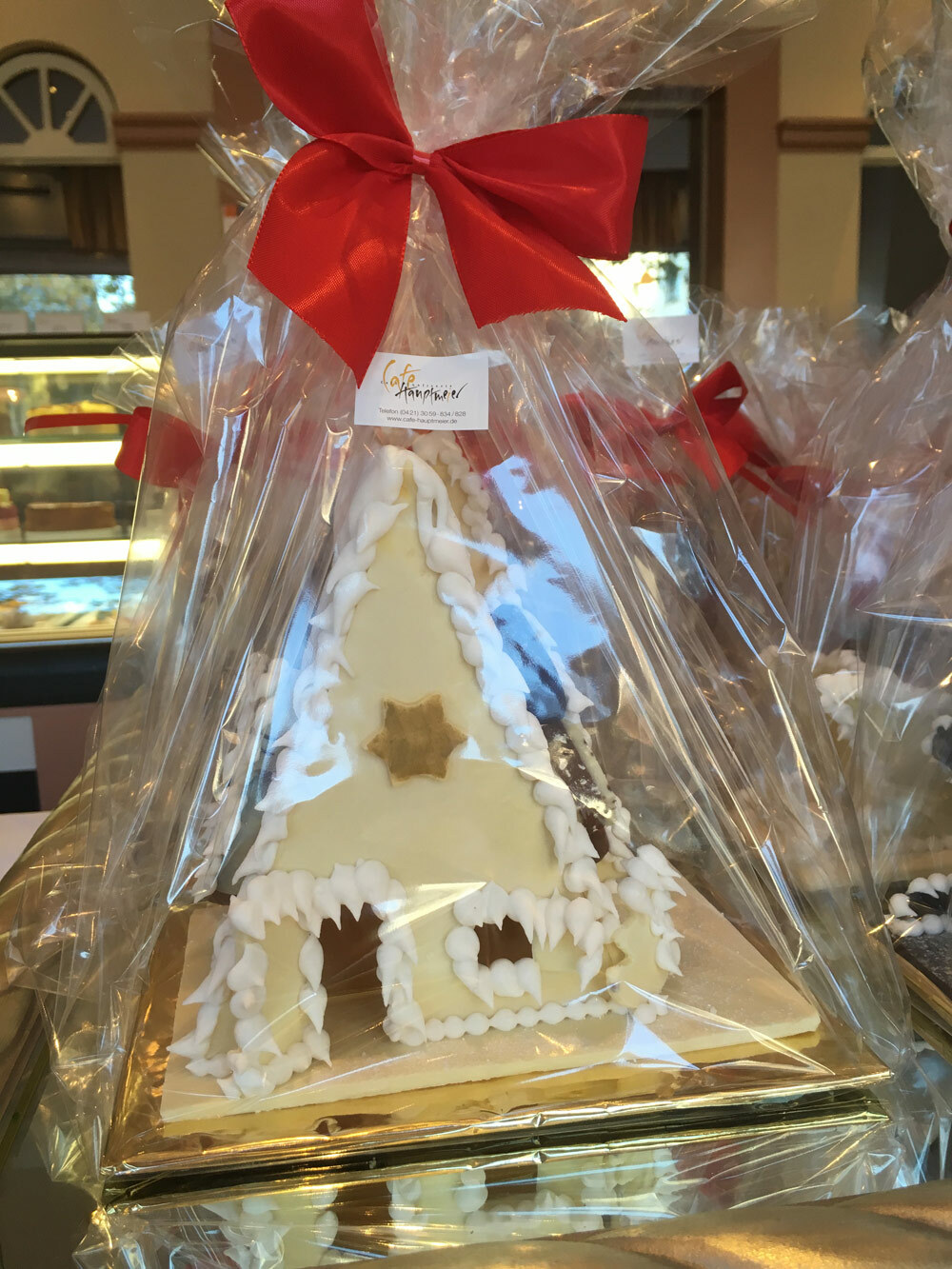
“The modelling is actually not as difficult as you might think,” Hauptmeier tells me. And he’s happy to pass on his knowledge. During his chocolate seminars, the pastry chef demonstrates how to prepare these sweet temptations using chocolate, petits fours and pralines. He also provides historical background information, from the introduction of chocolate to Europe to its modern-day industrial processing. For €89 per person, chocolate lovers get to create baked chocolate fours with white poppy seed mousse, liquorice truffles with dark chocolate and customised creations. Irresistible. And it gets better: at the regular dinner evenings you can simply tuck in and enjoy. So what can you look forward to? Five courses, each with a chocolate element and a matching wine: goose liver mousse in chocolate filo pastry with an apple and coriander compote, and game consommé with chocolate and leek ravioli and carrots, are just two examples of what’s on offer. The price of €82 per person includes an apéritif, mineral water and coffee. The desserts that Hauptmeier creates also tend to be unconventional. It’s not unusual for a cake to contain some avocado, or for a chocolate to have a little liquorice in it. “Most of the time they take a little convincing, but once guests have had a taste they are always absolutely amazed,” says Hauptmeier.
I wouldn’t say no either, and continue my tour of the café. If you think it’s impossible to get any sweeter, you haven’t reckoned with Schröter’s Chocolaterie:
Schröter’s Chocolaterie & Patisserie in the Schnoor quarter
“It’s probably possible to live without chocolate, but I’m not sure that life would be worth living.” Manager Daniel Schröter expresses exactly what I feel. Together with pastry chef Christian Thielen, he aspires to the highest levels of chocolatier craftsmanship by producing exceptional chocolate specialities and hand-made creations. In their shop in the Schnoor quarter and online they sell luxury chocolates and truffles with and without alcohol, all sorts of other chocolate, and fruity spreads. After clicking through the online shop, my favourites are the walnut and marzipan praline, the piña colada truffle, the green and white chocolate bar with pistachios, the Schrötella chocolate spread and the strawberry and pepper fruit spread. Sheer heaven for any chocoholic.
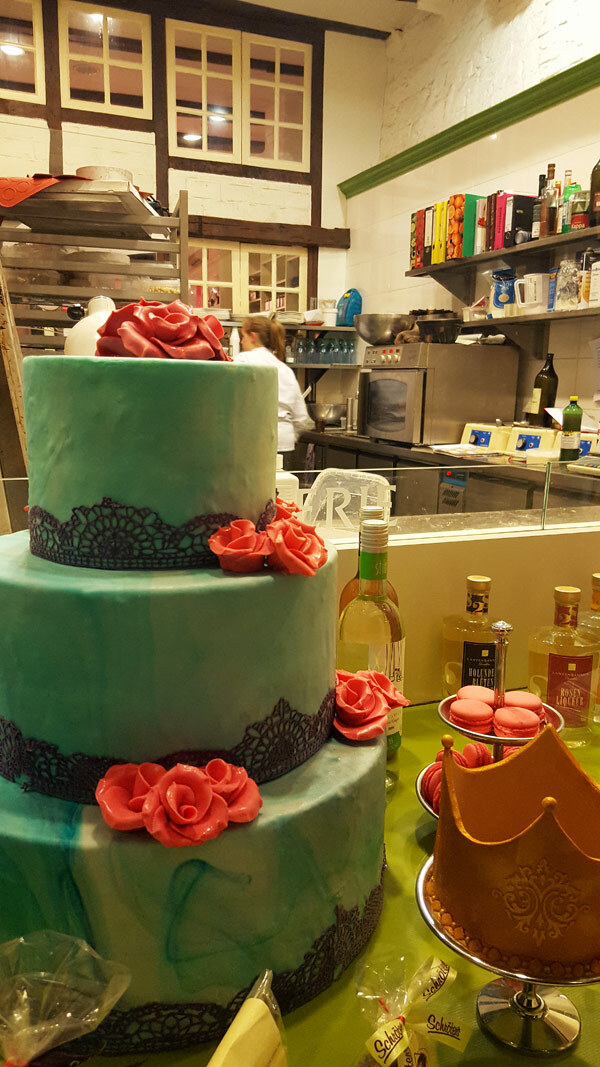
Anyone who fancies getting creative themselves can take part in one of the monthly workshops held by one of the shop’s experienced pastry chefs. After a brief introduction into preparing and making chocolate, participants can get stuck into creating their own sweet delicacies. Nibbling is absolutely encouraged. And the best thing is that you get to take home the truffles and chocolates that you made. The workshop costs €39 per person and lasts around two hours.
And on with Milka and Hachez:
Milka – Germany’s favourite chocolate brand
Mondelez Germany has its headquarters in Bremen, and one of its leading brands is Milka. The name is a combination of the German words ‘Milch’ (milk) and ‘Kakao’ (cocoa). Here’s a brief timeline with the most important facts and figures:
19 March 1901: Milka is born. The brand name is registered as a trademark.
1901: The first Milka bar is packed into the famous purple wrapper, and Milka is introduced on the German market.
1926: Milka introduces seasonal products, such as Easter bunnies and Santa Clauses.
1962: The Milka logo is registered as a trademark.
1964: Purple becomes the official brand colour. The Milka cow is born: the advertising agency Young & Rubicam come up with the cow, which goes on to become a central feature of Milka advertising in 1973.
2007: Milka is now sold in the eco-friendly flowpack, which replaces the old aluminium foil.
2011: The advertising slogan ‘dare to be tender’ is introduced.
Anyone interested in Milka should visit their very informative and well-designed website.
Hachez – Germany’s only premium manufacturer
Hachez is the only manufacturer in Germany that carries out all work processes – from roasting the cocoa beans to manufacturing the end product – at its own factory, which is in Bremen. To me, Hachez chocolate is a treat. I’m often given it as a present, so maybe that’s why. And I certainly wouldn’t buy a bar of Hachez chocolate just for munching on every day, as I sometimes do with other brands ;)
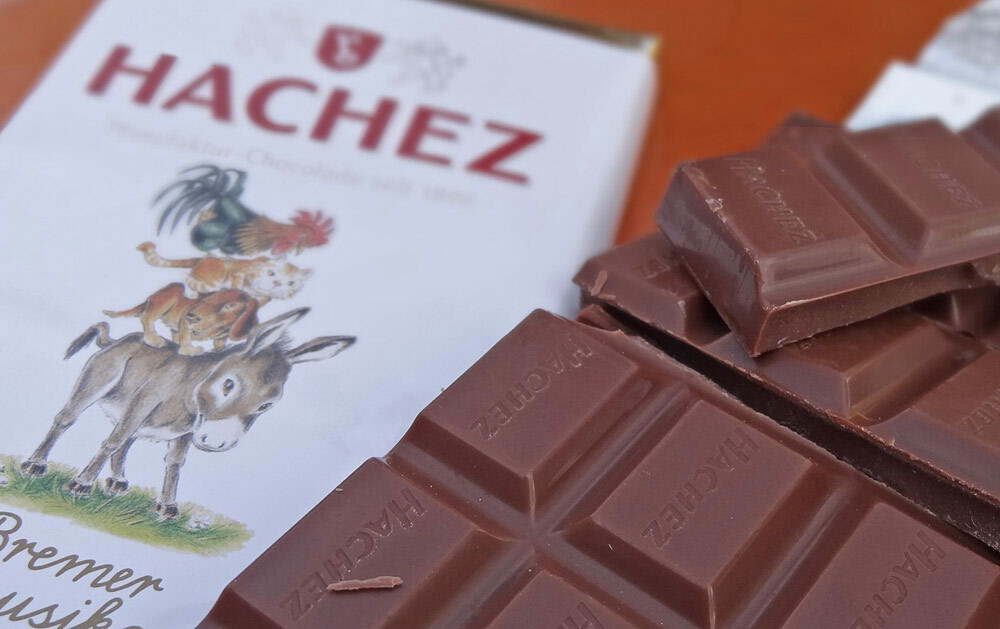
Here are the most important facts and figures on Hachez:
1 July 1890: HACHEZ Chocolade GmbH & Co. KG. is founded in Bremen by Belgian chocolatier Joseph Emile Hachez.
Second World War: The establishment in Bremen’s Neustadt district is almost completely destroyed. There is no money to start again.
1953: The company is sold, enabling its reconstruction and the continuation of production.
1970: Construction of a new logistics centre as the main national and international distribution point for Hachez products.
Summer 2000: Bremen-based entrepreneur Hasso G. Nauck and Wolf Kropp-Büttner buy up all company shares. Hachez is once again owned by people from Bremen and returns to its familial roots: Otto Hasse, inventor of Hachez’ leaf-shaped chocolates, was Hasso G. Nauck’s grandfather.
1 January 2012: Copenhagen-based firm TOMS Gruppen A/S buys all the company’s shares.
By the way, Hachez always uses ‘Chocolade’ rather than the usual German spelling. It’s a combination of the German word ‘Schokolade’ and the French word ‘Chocolat’. Anyone interested in finding out more should visit hachez.de.
And that brings my journey through Bremen’s love affair with chocolate to an end. I’ve had my fill for now, but I must admit I feel reassured that Bremen appears to have enough chocolates in store to satisfy chocoholics like myself. :)
This is a guest article by Nele Grashoff
Success Stories
10 Leading Coffee Companies from Bremen
From trading to roasting to logistics – no one does coffee quite like Bremen. But who are the players driving the business in Germany’s coffee capital? Meet ten of them.
Learn moreTwelve international food and beverage companies in Bremen
Becks and Melitta may be high-profile brands, but international food and beverage companies also manufacture lots of other products in Bremen and Bremerhaven. Here are twelve examples.
Learn moreSeven products from Bremen that everybody knows
Made in Bremen, sold around the world: these products are hugely popular at home and abroad.
Learn more